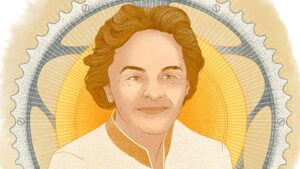Maria Telkes: Maria Telkes, a name that resonates with innovation and brilliance, was a Hungarian-American scientist whose groundbreaking work in the field of solar energy and thermoelectric power made her a trailblazer in the mid-20th century. Born in Budapest in 1900, Telkes’s journey was marked by a relentless pursuit of knowledge and a commitment to harnessing renewable energy sources.

Early Life and Education
Maria Telkes’s academic journey began at the University of Budapest, where she earned her degree in chemical engineering in 1920. Driven by a passion for scientific exploration, she moved to the United States in 1925 to pursue a Ph.D. at the Massachusetts Institute of Technology (MIT). Her focus on thermodynamics laid the foundation for her future work in renewable energy.
Groundbreaking Contributions to Solar Energy
Telkes’s most notable achievement came in the 1940s when she collaborated with architect Eleanor Raymond to build the first solar-powered house. The Dover Sun House, completed in 1948 in Dover, Massachusetts, was an embodiment of Telkes’s pioneering work in solar technology. She developed a system of using phase-change materials to store and release solar energy efficiently. This innovation marked a crucial step towards making solar energy a viable and sustainable source of power for residential use.
The Solar Distiller and Beyond
Telkes’s influence extended beyond residential applications. During World War II, she worked on projects of national significance. One of her notable contributions was the invention of the solar distiller, a device that used solar power to produce fresh water from seawater. This technology proved invaluable for military personnel stationed at sea and in arid regions, showcasing Telkes’s ability to apply her expertise to address pressing real-world challenges.

Thermoelectric Power and Beyond
Telkes continued her groundbreaking work in the decades that followed, delving into the realm of thermoelectric power. Her research focused on developing materials that could convert heat directly into electricity, a concept with vast implications for clean and sustainable energy production. Telkes’s efforts contributed significantly to advancing the understanding of thermoelectric materials and their potential applications.
Legacy and Recognition
Maria Telkes’s impact on the field of renewable energy earned her widespread recognition. In 1952, she became the first woman to be appointed as a research professor at MIT, solidifying her status as a trailblazer in a male-dominated scientific community. Telkes’s achievements were not confined to academia; she actively pursued practical applications of her research, leaving an indelible mark on the development of solar technology.

Telkes’s pioneering spirit and relentless pursuit of innovative solutions for harnessing renewable energy sources have left an enduring legacy. Her work laid the groundwork for subsequent generations of scientists and engineers working towards a more sustainable future. The Dover Sun House stands as a testament to her vision, showcasing the transformative power of solar energy in residential settings.
Maria Telkes’s fame is rooted in her visionary contributions to the field of solar energy and thermoelectric power. As a woman in a predominantly male field, she defied norms and became a trailblazer, leaving an indelible mark on the scientific community. Telkes’s innovative spirit and commitment to sustainability continue to inspire researchers and advocates for clean energy today, underscoring the timeless relevance of her pioneering work.
WRITTEN BY COLLINS


Comments are closed.